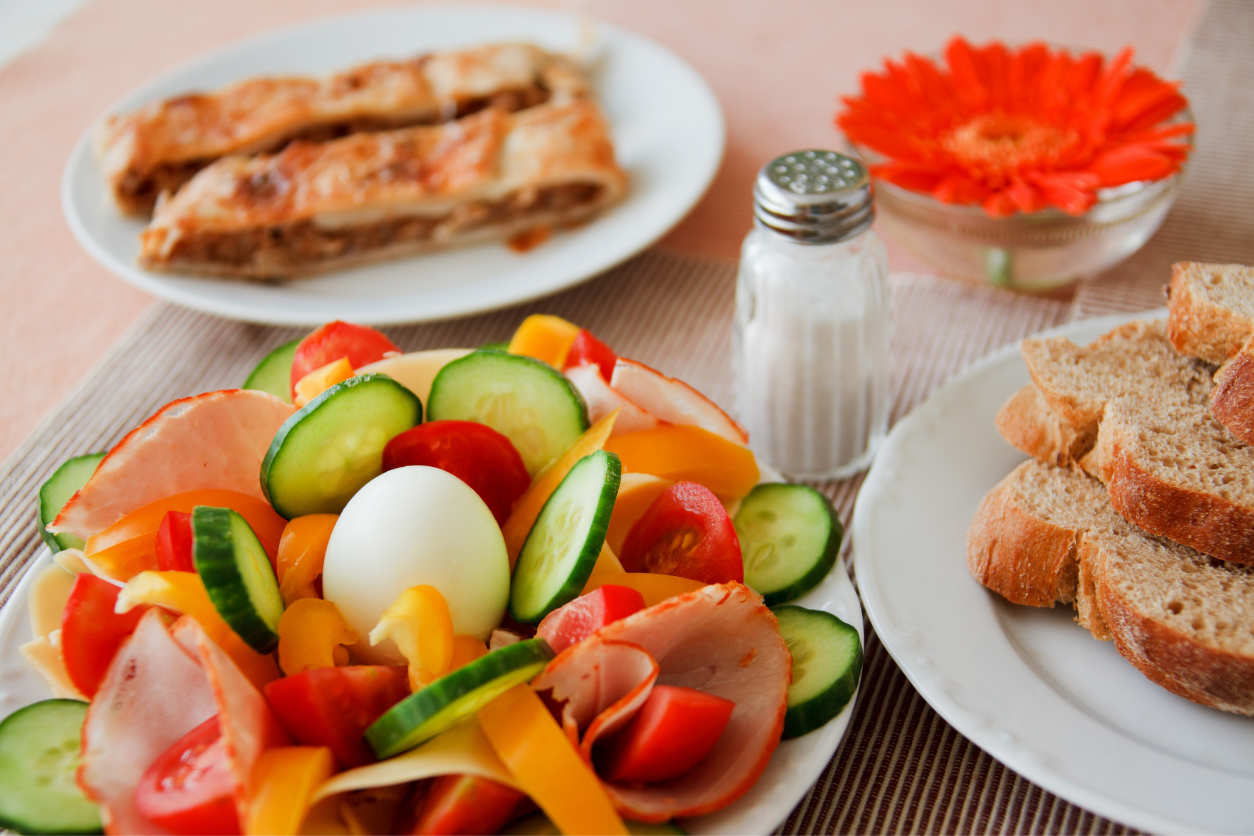School cafeterias are loaded with unhealthy options that can slow you down. And if you think opting for the vending machine is a better bet, think again: Those candy bars aren’t going to feel good when practice rolls around.
The good news is that there are smart, athlete-friendly options in most cafeteria lines—if you know what to look for. And if you’re in a pinch and have to punch your meal out of a machine, you’re not totally out of luck either. Here’s your scouting guide to surviving each.
Vending Machine: What to Eat
Rows of candy and chips make vending machines synonymous with junk food, but not every option is all bad. Your best bets:
Nuts – Nuts such as peanuts, almonds, cashews, or walnuts can be a perfect mid-day snack for athletes. Their high protein and high fiber content help keep you fuller for longer while also supporting optimum performance. Nuts also contain high amounts of healthy fats, which reduce joint inflammation and promote muscle formation. Raw or lightly seasoned nuts are best.
Granola Bars – Vending machine granola bars can be super hit-or-miss. For one, you’re going to want to avoid anything that’s been dipped in chocolate—its nutrition won’t be much better than a candy bar. Look for whole-grain or all-natural options, since they are higher in fiber, protein, and athlete-friendly carbs.
Pretzels – Many varieties of pretzels are completely fat-free, and they provide the sodium you need to get through a sweaty afternoon practice. Opt for whole-grain if possible; they contain more fiber and protein.
Jerky – Not every vending machine has jerky, but if it’s there, it’s a great choice. Jerky is absolutely packed with protein, making it a great pre-workout snack. The convenience of jerky is also unmatched.
Baked Chips – Baked chips won’t provide you with a ton of valuable nutrients, but the carbohydrates they contain certainly beat eating nothing. Baked chips also have considerably less fat than regular chip varieties, making them easier to digest.
Water – If you’re hitting a vending machine for a beverage, you’re best off keeping it simple. Flavored waters, juices, and sodas all add unnecessary amounts of sugar. Good ol’ fashion water is one of the best things athletes can put in their bodies, as it plays a critical role in nearly every one of your natural processes.
Vending Machine: What to Skip
These vending machine villains are counterproductive in nearly every situation.
Candy – Whether it’s gummy, chewy, or chocolatey, candy is stuffed with massive amounts of sugar. When consumed, that sugar causes a rapid spike in blood sugar. You might feel energetic for an hour or so, but your “sugar high” will come to a screeching halt sooner rather than later, leaving you feeling exhausted.
Pastries, Donuts, or Cakes – These are the textbook definition of ultra-processed snacks. They might claim they’re “made with real fruit,” but the overwhelming odds say their nutrition facts aren’t much better than a candy bar.
Chips – The chips that typically occupy vending machines—Cheetos, Doritos, Lay’s, and others—are generally high in fat and calories while containing no valuable nutrients. “If you [eat] something really high in fat, it’s going to make you feel heavier and weighed down. You’ll want to nap [rather] than go play ball,” says performance dietitian Cheryl Zonkowski.
Cookies – Remember all those reasons you shouldn’t eat candy? They apply to cookies too.
Soda – A single bottle of soda contains enough sugar to sabotage your entire day. A 20-ounce bottle of Mountain Dew contains a staggering 77 grams of added sugar. If you’re eating a 3,000-calorie-per-day diet, that single bottle will account for more than 10 percent of your daily calories. The latest federal guidelines recommend reducing added sugar consumption to less than 10 percent of your daily calories, a goal that’s nearly impossible if you regularly drink soda.
The Three Things You Need to Survive the Lunch Line
Your best bet for getting good fuel is the lunch line. Here’s how to make the right moves when you have your tray in hand.
Protein Picks
When going for a protein, opt for baked, grilled, or broiled meat or fish as often as possible. Fried foods, such as chicken fingers, are generally harder to digest due to their high-fat content. High-fat foods sit in the stomach longer than other foods, which means they take several hours to digest and leave you feeling bloated and sluggish. A hamburger can actually be a solid high-protein choice, provided it isn’t covered in cheese and bacon. Smart, sport-friendly protein options include grilled chicken and a turkey sandwich.
Fruits and Veggies
When it comes to fruits and veggies, simpler is usually better. Lots of cafeterias serve sliced fruit in a heavy syrup, which adds a hefty dose of excess sugar. Go ahead and pass on that. Whole fruit, which hasn’t undergone extensive processing (think of how it looks in the produce aisle) is a better bet. Bananas, apples, oranges, and pears are a few examples of the whole fruit that can often be found in cafeterias. In terms of veggies, try to keep it as simple as possible. Carrots, broccoli, or a side salad (preferably with light dressing) are all solid choices.
Grains and Starches
French fries are a staple of high school cafeterias, but unless you want to feel sluggish all afternoon, it’s best to pass. Better choices for grains or starches include brown rice, whole-grain bread, potato (white or sweet), or pasta. These options will give you the athlete-friendly carbs that help you head into training or practice with a full head of steam. “Human bodies don’t necessarily stop when they run out of carbs, but they do slow down,” says Roberta Anding, Director of Sports Nutrition at the Houston Children’s Hospital.
Original article posted on stack.com
Did you enjoy the article ‘How to Eat Well Anywhere (Even at School!)’? If so, check out more of our articles HERE.


